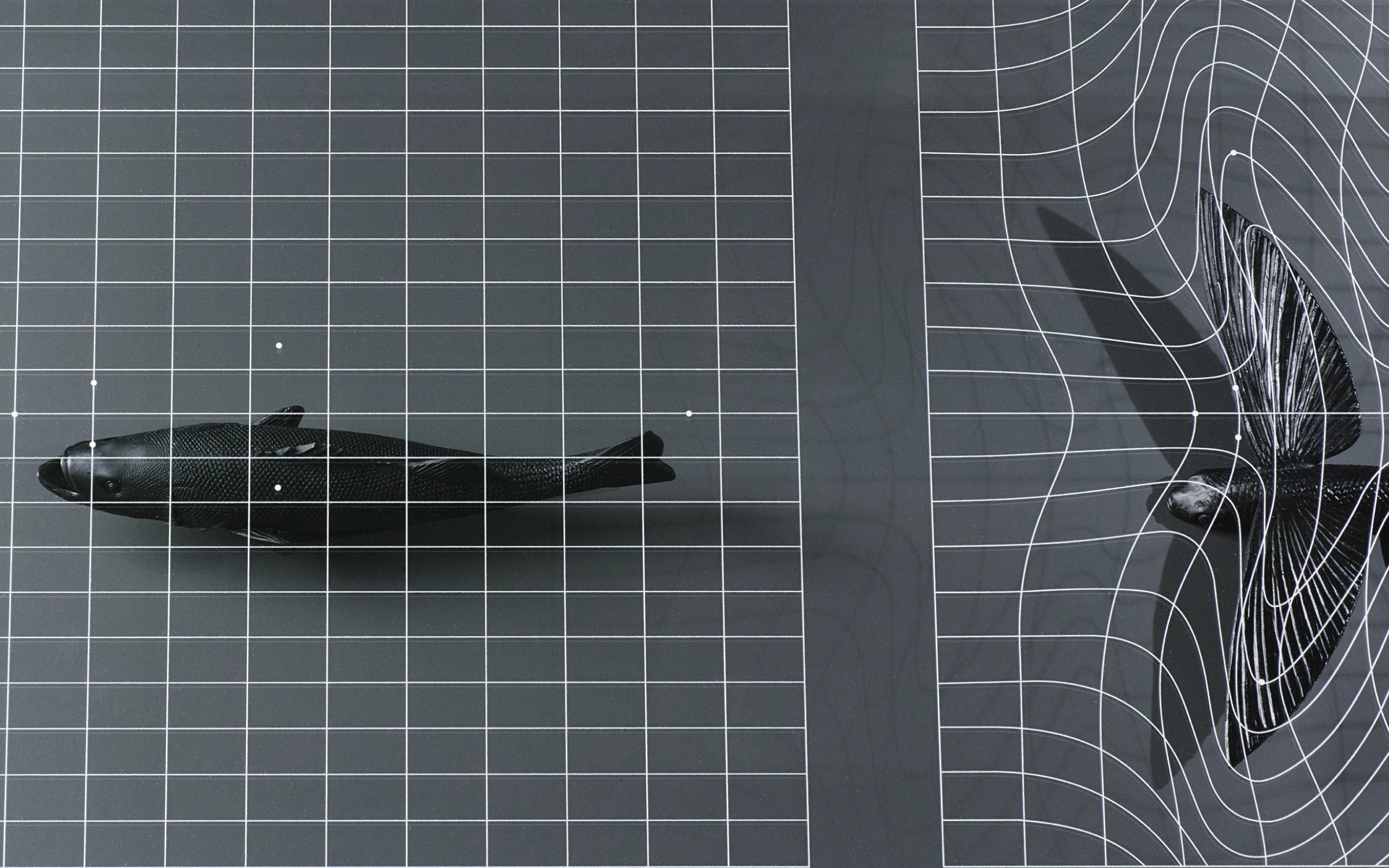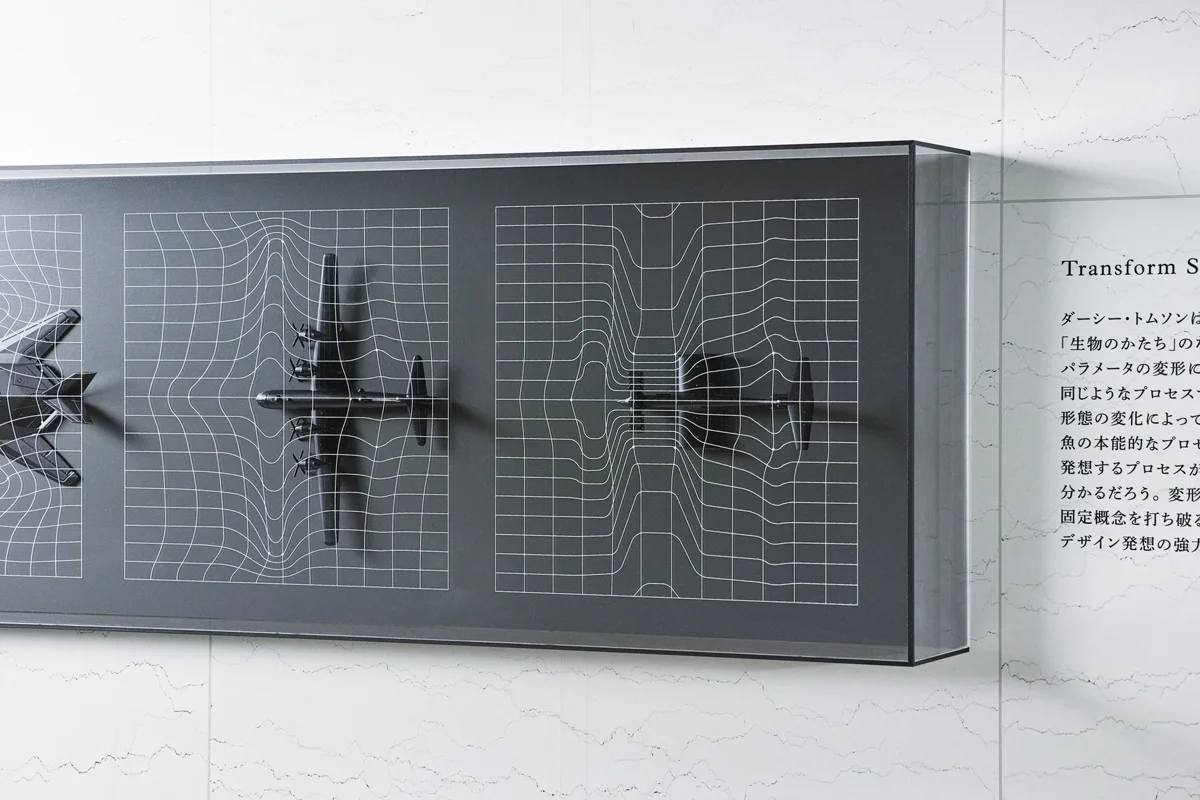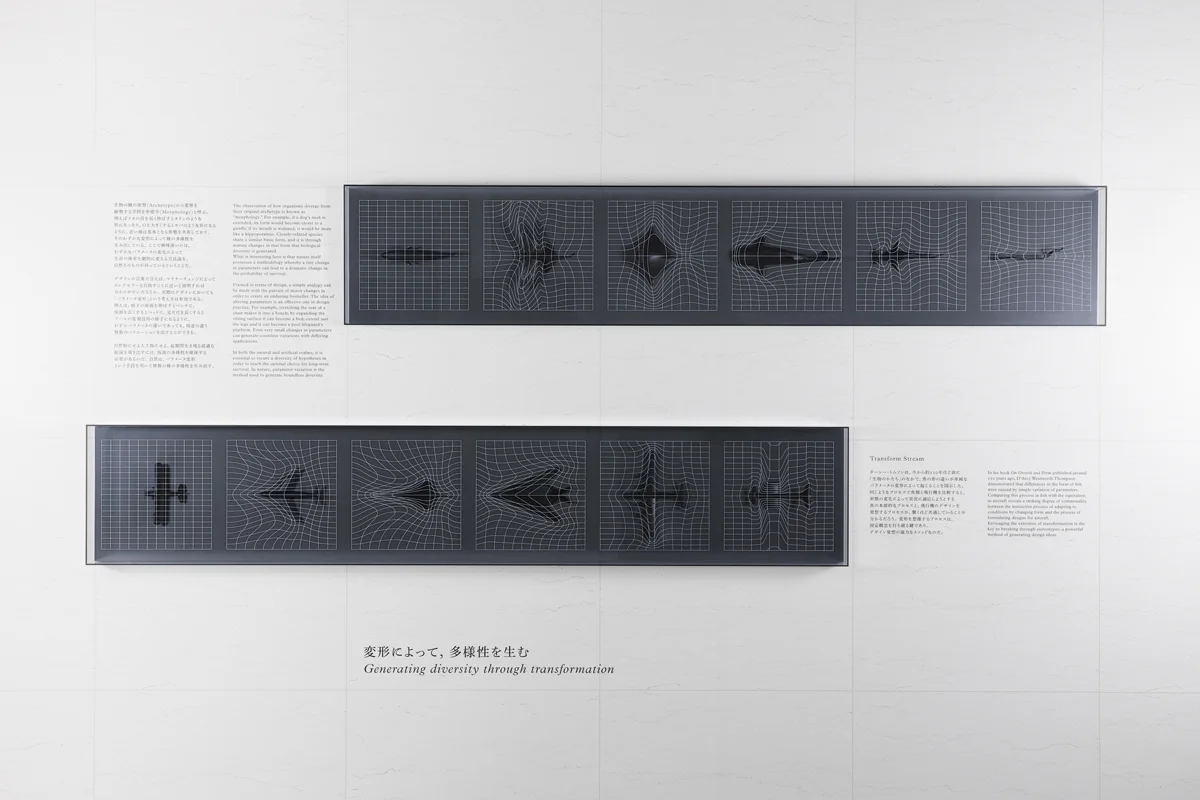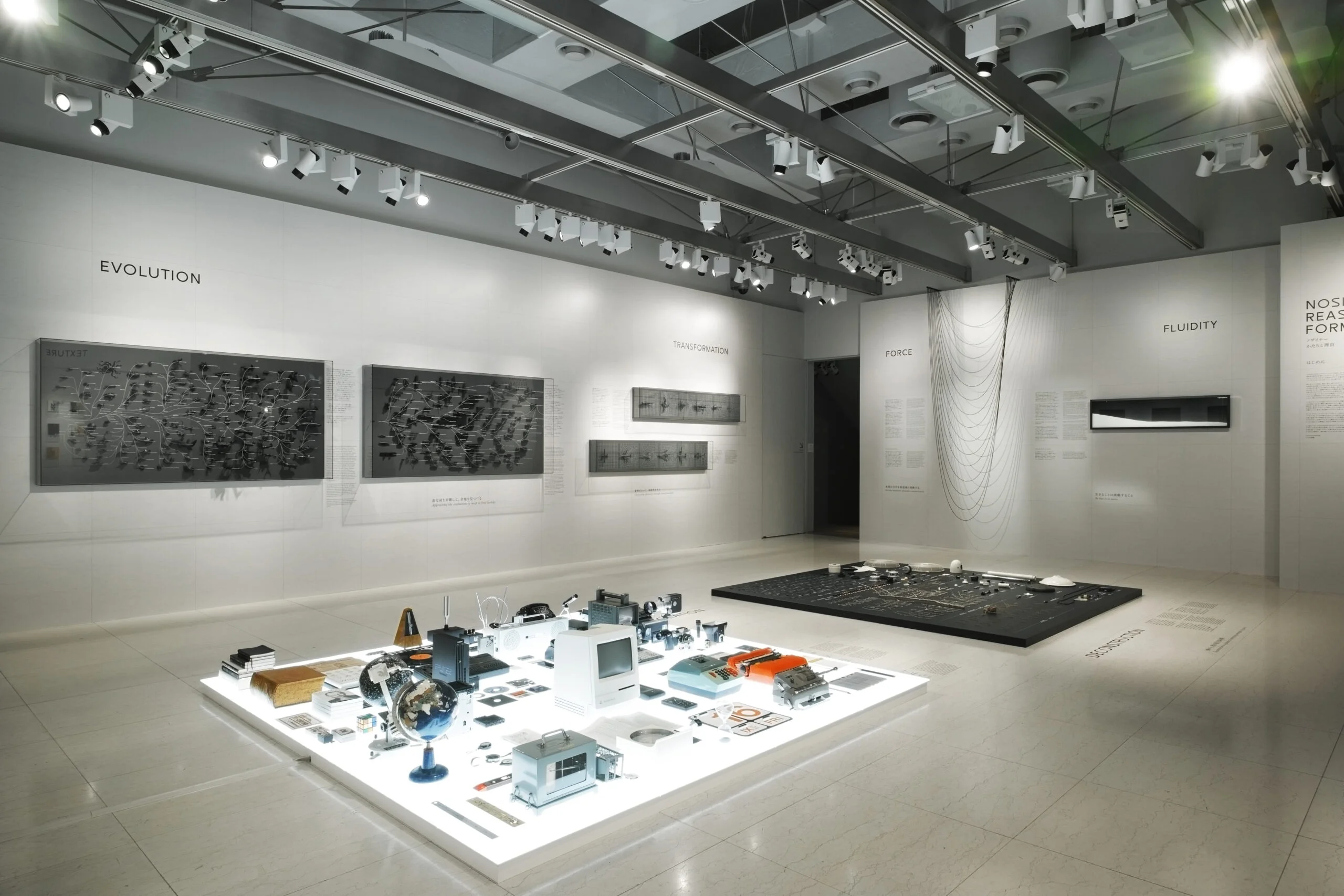
PROJECT
ggg/ Transformation
Morphological transformation principles from biology visualize creative processes for generating diversity.

WHY
What is the method for reflecting on history for the future?
Society is changing drastically. Even now 50 years later since 1972, which was said to be the limit of growth for human beings, we are still growing today. Changes to halt the collapse of biodiversity and actions to keep a sustainable society no longer have a temporal grace. We need more people to change society. We often say that things “evolve” by changing society. If we say that the changing society is evolving, will we be able to learn more about the process of this evolving society, from the evolution of living things?

HOW
Can we learn methods to break stereotypes and generate ideas?

Transformation Steam.
In his book On Growth and Form published around 110 years ago, Darcy Wentworth Thompson demonstrated that differences in the form of fish were caused by simple variation of parameters. Comparing this process in fish with the equivalent in aircraft reveals a striking degree of commonality between the instinctive process of adapting to conditions by changing form and the process of formulating designs for aircraft. Envisaging the extremes of transformation is the key to breaking through stereotypes, a powerful method of generating design ideas.
Even in the design of artefacts, things are constantly evolving and culling from advances in technology, human interests and within the changing context of time. The development of species on the premise of diversity closely resembles the form of evolution of living things. The invention constantly seeks to supplement the evolution of people. Being faster and more comfortable is perhaps not the kind of design that has been advanced by such philosophy and instinct of mankind. If evolution and the design of living organisms are sufficiently similar, it should make innovation easier, by understanding the process well, applying this to inventions and designs.”Evolution Thinking” is a methodology of creativity for education, to learn the ways of thinking, from nature.


We can also see that integration of different types is easier in the case of man-made objects than animals. In the natural world, it is impossible to combine disparate species, such as jellyfish and humans, but it is well-known that innovation can be generated through unusual combinations of different man-made objects. This ease of integration can be seen in examples such as the amphibious vehicle, which integrates a boat and an automobile, and the Osprey, which was created by combining a helicopter and an airplane.
This evolutionary map was designed for “NOSIGNER–Reason behind Forms” exhibition starts from the hypothesis “What if all designs are imitations of nature, or what if the very act of designing is the act of unconsciously simulating the evolution of nature?” Through this exhibition, we compares/contrasts artificial and natural objects and explores the purpose within form, as well as ways of conceiving designs, based on the idea that “design is the biology of objects.”This philosophy became the basis of “Evolution Thinking”.

WILL
Evolutional Creativity came to be by integrating all ways of thinking.
“Evolutional Creativity” started as a small experimental exhibition, and is currently gradually spreading, while being supported by proponents such as the automobile company, the real estate company of the largest scale in Japan and the manager of the global company of apparel. (Reference article:
INFORMATION
- What
- ggg/Transformation
- When
- 2016
- Where
- Tokyo, Japan
- Client
- Scope
- Installation / Space Design
CREDIT
- Art Work
- Eisuke Tachikawa
- Photograph
- Kunihiko Sato









